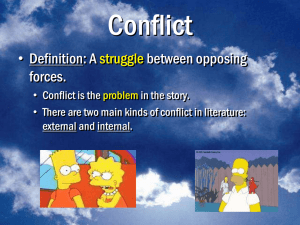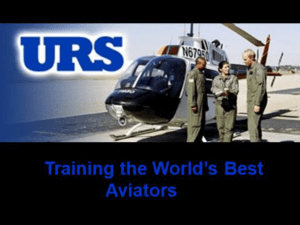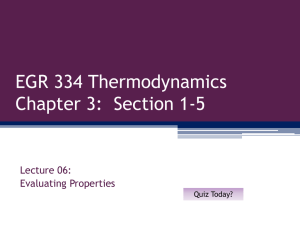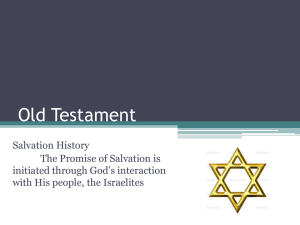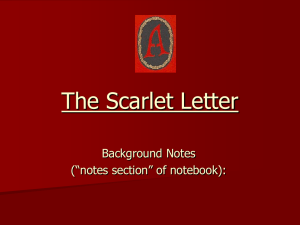File
advertisement
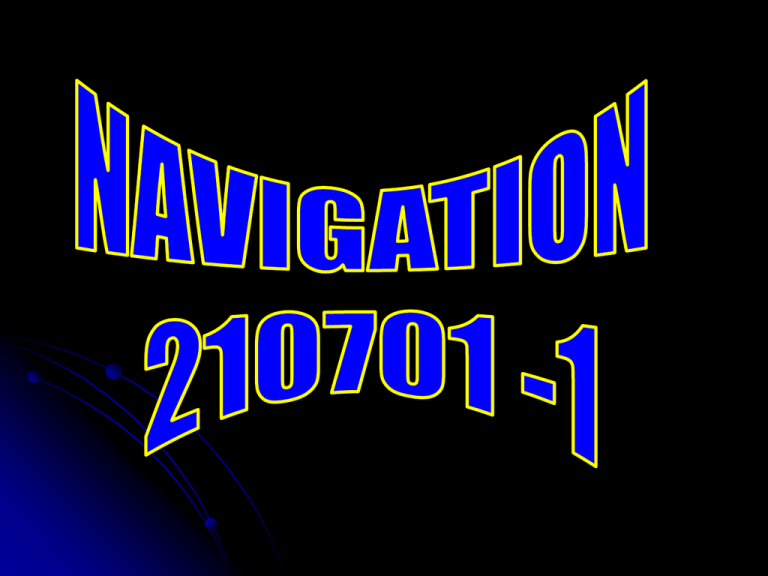
1. The description "Racon" beside an illustration on a chart would mean a _____. A. radar conspicuous beacon B. circular radiobeacon C. radar transponder beacon D. radar calibration beacon 2. When navigating using DGPS (Differential Global Positioning System) you may expect your position to be accurate to within a radius of _________. A. 10 meters B. 20 meters C. 50 meters D. 100 meters 3. When using GPS, how many position lines are required for a 3D (dimensional) fix that takes into account altitude? A. 1 B. 2 C. 3 D. 4 4. As a vessel changes course to starboard, the compass card in a magnetic compass remains A. aligned with compass north B. also turns to starboard C. first turns to starboard then counterclockwise to port D. turns counterclockwise to port 5. Which of the following is the approximate time a radar pulse travel out to and the echo return from a target at 24 miles? A. 400 microsec. 1mile = 1852 mtrs. VEL.OF RADAR WAVE = 300 MTRS. B. 200 microsec. PER MILLION OF SEC.(MICROSEC.) C. 300 microsec. 48 X 1852 MTRS 300 MTRS./MICROSEC. D. 100 microsec. = 296.3 MICROSEC 6. When facing into the wind in the Northern Hemisphere the center of low pressure lies: A. directly in front of you B. directly behind you C. to your left and behind you D. to your right and behind you 7. You are enroute to assist vessel A. Vessel A is underway at 4.5 knots on course 233° T, and bears 264° T, 68 miles from you. What is the time to O.S. intercept if you make 13 Knots? C TGT. A A. 6h 31m A B. 6h 47m C. 7h 03m D. 7h 34m + B ANGLE A = BRG.OF O.S. FR.TGT. – TGT.CO. = 84 – 233 = 149˚ + SIN ANGLE C = TGT.SPD X SIN ANGLE A O.S.SPD. = 4.5 X SIN 149 13 = 10.27˚ TRUE CO. TO STEER = TGT.BRG. +/- ANGLE C = 264 – 10.27 = 253.73˚ ANGLE B = 180 – (ANGLE A + ANGLE C) = 180 – (149 + 10.27) = 20.73 RUNNING TIME TO INTERCEPT = TGT.RANGE X SIN ANGLE A SIN ANGLE B X O.S. SPD. = 68 X SIN 149 SIN 20.73 X 13 = 7.61 HRS. = 7 HRS. 37 MINS. 8. As your vessel is heading southward along the east coast of the United States, you encounter a buoy showing a red flashing light. How should you pass this buoy? A. Pass it about 50 yards off on either side. B. Leave it to your starboard. C. Leave it to your port. D. Pass it well clear on either side. 9. Which statement about a simple conic chart projection is TRUE? A. It is an equal-area projection. B. It is a conformal projection. C. Meridians appear as curved lines. D. The scale is correct along any meridian. 10. Your dead reckoning position should be plotted _______________. A. whenever an estimated position is plotted B. when it agrees with your loran position C. when coming on or going off soundings D. at least every hour on the hour in the open waters of the sea 11. What causes the error of collimation with regards to the four adjustments to a sextant? A. Telescope not parallel to the frame B. Personal error C. The frame and index mirror not perpendicular D. The frame and horizon glass not perpendicular 12. The Sun at a maximum declination north would be approximately at ______________. A. aphelion B. perihelion C. autumnal equinox D. first point of Aries 13. If an observer in the Northern Hemisphere faces the surface wind, the center of low pressure is to his: A. left, slightly behind him B. right, slightly behind him C. left, slightly in front of him D. right, slightly in front of him 14. What will be the time after 0800 EST (ZD +5) that the height of the tide at South Freeport, ME, will be 6.0 feet (1.8 meters) on 7 November 1983? A. 0936 B. 0942 Inc.question C. 0951 D. 1001 15. A great circle crosses the equator at 134° E. It will also cross the equator at what other longitude? A. 46° W B. 124° W C. 134° W D. 34° E 16. You are underway on course 050‚ T and your maximum speed is 11 knots. The eye of a hurricane bears 070‚ T, 80 miles from your position. The hurricane is moving towards 270‚ T at 19 knots. What course should you steer at 11 knots to have the maximum CPA? A. 250 (O.S.SPD.) 11 = .0578 INV.SIN = 35.376 B. 234 (HUR.SPD) 19 C. 227 90 – 35.376 = 54.623 D. 215 (HUR.CO.) 270 – 54.376 = 215˚ 17. Prevailing winds between 30° N and 60° N latitude are from the __________________. A. north B. south C. east D. west 18. Which buoy may be odd numbered? A. Mid-channel buoy B. Unlighted nun buoy C. Lighted green buoy D. All of the above 19. You would find the variation on a polyconic projection chart __________. A. on the compass rose B. on the mileage scale C. written on the chart title D. at each line of longitude 20. There are seven sources of error in the marine sextant. Of the four errors listed, which one is adjustable? A. Error of collimation B. Prismatic error C. Graduation error D. Centering error 21. If the Sun's observed altitude is 47°50', the zenith distance is _____. A. 42°10' 90 B. 42°50' Ho = 47˚ 50’ C. 47°50' ZX = 42˚ 10’ D. 132°10' 22. According to Buys Ballot's law, when an observer in the Northern Hemisphere experiences a northeast wind the center of low pressure is located to the __________. A. northeast B. west-southwest C. northwest D. south-southeast 23. A navigator fixing a vessel's position by radar _________. A. should never use radar bearings B. can use radar information from one object to fix the position C. should only use radar bearings when the range exceeds the distance to the horizon D. must use information from targets forward of the beam 24. The steady current circling the globe at about 60° S is the __________. A. Prevailing Westerly B. Sub-Polar Flow C. West Wind Drift D. Humboldt Current 25. Prevailing winds between 30° N and 60° N latitude are from the ______. A. east B. west C. north D. south 26. A nun buoy will ________. A. be green in color B. have an even number C. be left to port when entering from seaward D. be cylindrical in shape 27. Which would you consult for information about the general current circulation in the North Atlantic Ocean? A. Pilot chart B. Coast Pilot C. Current Table D. Climatological Atlas 28. Which is a nonadjustable error of the sextant? A. Error of perpendicularity B. Side error C. Error of collimation D. Centering error 29. The difference of latitude (l) between the geographic position (GP) of a celestial body and your position, at the time of upper transit, is represented by _____. A. colatitude B. codistance C. zenith distance D. altitude 30. The edge of a hurricane has overtaken your vessel in the Gulf of Mexico, and the northwest wind of a few hours ago has shifted to the west. This is an indication that you are located in the __________. A. navigable semicircle B. dangerous semicircle C. low pressure area D. eye of the storm 31. During the winter months, the southeast trade winds are ________. A. stronger than during the summer months B. weaker than during the summer months C. drier than during the summer months D. wetter than during the summer months 32. When outbound from a U.S. port, a buoy displaying a flashing red light indicates: A. a junction with the preferred channel to the left B. a sharp turn in the channel to the right C. the port side of the channel D. a wreck to be left on the vessel's starboard side 33. A pilot chart does NOT contain information about ________. A. average wind conditions B. tidal currents C. magnetic variation D. average limits of field ice 34. An instrument designed to maintain a continuous record of atmospheric pressure is a(n): A. mercurial barometer B. aneroid barometer C. barograph D. thermograph 35. If the Sun's observed altitude is 27°12', the zenith distance is _____. A. 62°48' B. 27°12' 90 Ho = 27˚ 12’ C. 152°48' ZX = 62˚ 48’ D. 43°12' 36. Your vessel is on course 150° T, speed 17 knots. The apparent wind is from 40° off the starboard bow, speed 15 knots. What is the speed of the true wind? A. 9.0 knots er = VSL.CO. / SPD B. 10.2 knots ew = TRUE WIND / SPD C. 11.0 knots rw = APP.WIND / SPD D. 12.0 knots A e – 2ac COS.A b = √(15)2 + (17)2 – 2(15)(17)COS.40 = 11.02 b2 = a2 + c2 b + c 17 wC a 40 15 r B 37. The velocity of the apparent wind can be less than the true wind and from the same direction, if certain conditions are present. One condition is that the ___________. A. ship's speed is more than the true wind velocity B. true wind is from dead astern C. true wind is on the beam D. true wind is from dead ahead 38. Where will you find information about the duration of slack water? A. American Practical Navigator B. Sailing Directions C. Tide Tables D. Tidal Current Tables 39. Information about the currents for the Pacific Coast of the U. S. are found in the _____. A. Ocean Current Tables B. Nautical Almanac C. Tide Tables D. Tidal Current Tables 40. You are steaming in a westerly direction along the Gulf Coast. You see ahead of you a lighted buoy showing a red isophase light. Which action should you take? A. Alter course to port and leave the buoy to starboard. B. Alter course to starboard and leave the buoy to port. C. Alter course and leave the buoy near by on either side. D. Alter course and pass the buoy well-off on either side. 41. All of the following can be found on a Pilot Chart EXCEPT information concerning the: A. percentage of frequency of wave heights B. percentage of poor visibility conditions C. sea surface temperatures D. amounts of precipitation 42. Your position is LAT 20°00' N, LONG 45°00' W when you take a radio bearing on a ship in distress in LAT 15°00' N, LONG40°00' W. Your RDF bearing corrected for calibration error is 135.6° T. What is the rhumb line course to rendezvous with the vessel in distress. A. 134.9° T LAT1 = 20˚00 N -1217.25 LAT2 = 15˚00 N - 904.50 B. 135.6° T DLAT = 5˚00 S 312.75 C. 136.2° T D. 136.9° T Tan Co. = DLO / DMP LONG.1 = 45˚ 00 W = 300 / 312.75 LONG.2 = 40˚ 00 W = S 43.8 E DLO = 5˚ 00 E = 136.2 300 43. An aneroid barometer is an instrument ________. A. used to measure the speed of wind B. in which the pressure of the air is measured C. that tells which direction a storm is coming from D. used to measure the height of waves 44. At upper transit, if the zenith distance is 34°, the geographical distance from the observer to a body's GP is _____. A. 510 miles B. 1220 miles 34˚ X 60 =2040 C. 2040 miles D. 2260 miles 45. Your vessel is on course 135° T, speed 18 knots. From the appearance of the sea you estimate the speed of the true wind as 24.5 knots. The apparent wind is 40° on the starboard bow. Determine the wC speed of the apparent wind. A. 24.2 knots er = VSL.CO. / SPD b B. 28.4 knots ew = TRUE WIND / SPD 24.5 rw = APP.WIND / SPD C. 32.2 knots D. 36.0 knots a e A+ b = c Sin B Sin C Sin C = 18 Sin 40 24.5 = 28.2 a = b Sin A Sin B a = 24.5 Sin 111.8 Sin 40 a = 35.4 c 40 18 46. On November 1st the zone time is 1700 EST (ZD +5) in LONG 75° W. What is the corresponding zone time and date in LONG 135° E? A. 0700, November 2nd B. 2200, November 1st C. 0700, November 1st D. 2200, October 31st 47. The red sector of a lighthouse that has a characteristic of white and red sectors indicates: A. identity characteristic of the lighthouse B. danger area C. safe area D. limits of navigational channel 48. The direction of the meridian through the observer towards the North geographic pole is: A. compass north B. geographic north C. true north D. magnetic north 49. Which of the following publications is a listing of Radio Weather services? A. Worldwide marine weather broadcast B. ALRS Vol 3 C. WMO publication no. 9 D. All of the above 50. What is the position of arrival of a vessel that steams 4,505 miles on course 135 T from Lat 22 deg 35.0N Lon 157 deg 30.0W? A. Lat 30 deg 30.5’S, Long 162 deg 35.3W B. Lat 32 deg 20.5S, Long 104 deg 30.0W C. Lat 32 deg 20.0S, Long 102 deg 35.3W D. Lat 30 deg 30.5S, Long 104 deg 30.0W Sin 45 = OPP 4505 DLO = 53˚05.5 COS 45 = ADJ. 4505 DLAT = 53˚05.5 51. What is the corresponding zone of sunset on 18 June in Lat 58 deg 10N, Long 172 deg 50E, the LMT of sunset is 2107H A. 20h 38m 20s LMT = 21 – 07 - 00 Λ IN TIME = 11 – 31 – 20 (-) B. 21h 38m 20s GMT = 09 - 35 - 40 C. 21h 35m 40s ZD = 12 (+) LZT = 21 – 35 - 40 D. 20h 40m 10s 52. The gnomonic projection is based: A. cone tangent at one parallel B. cylinder target at the equator C. plane tangent at one point D. infinite series of cones tangent at selected parallel 53. The sextant error of a marine sextant when the index arm set to zero and the reflected image in the actual horizon is not in continuous line is: A. prismatic error B. graduation error C. side error D. no error 54. Where is the diagram viewed by the observer as a diagram on the plane of the celestial equator? A. South pole B. North pole C. Equator D. The zenith 55. The compass that depend upon the earth’s magnetic for its directive force is: A. duv B. gyro C. pelorus D. magnetic 56. Which of the following is commonly associated with fog? A. warm front at night B. cold front C. low pressure area D. depression 57. Determine whether the following statements are correct. I. The correction for leeway is always plus when the wind is on the port side of the ship. II. The estimated leeway angle is always allowed away from the wind direction. A. I and II are not correct. B. I and II are correct. C. Only I is correct. D. Only II is not correct. 58. Each navigation satellite orbits the earth in: A. 24 hours B. 16 hours C. 6 hours D. 106 mins 59. To get the true course from the magnetic course, one of the following should be applied: A. magnetic adjustment B. magnetic dip C. deviation D. variation 60. Who performs the shifting of the steering from auto to manual and vice-versa? A. the bridge watch officer B. the AB C. the second officer D. the master 61. The low pressure enclosed by one or more isobars is called: A. frontal depression B. front C. occlusion D. trough 62. By means of which device is the hunt prevented from being transmitted to the repeater? A. magnetic B. electrical C. lost motion D. speed corrector 63. What is the weekly publication advising the mariners of important matters affecting navigation safety? A. weather bulletin B. Notice to Mariners C. Sailing directions D. Coast Pilot 64. What is the altitude after applying the dip and index error of the sextant? A. Observed Altitude B. Computed altitude C. Apparent altitude D. Sextant altitude 65. What is the angle between the true meridian and the compass needle? A. variation B. magnetic dip C. deviation D. compass error 66. The navigation system used in Loran C is: A. short range electronic B. long range high frequency C. long range at 1950 khz D. hyperbolic long range 67. Port facility information in European ports can be obtained from: A. Nautical index B. Sailing Direction C. Chart Catalog D. World port index 68. What is the great circle of the celestial sphere that passes through the Zenith, the Nadir and the eastern point. A. hour circle B. principal vertical C. celestial meridian D. prime vertical 69. What is the circular path in the celestial where the celestial appears to follow around the with the celestial pole as the circle? A. diurnal circle B. hour circle C. vertical circle D. circle of equal altitude 70. What is the area where no signal is received, as the radio wave signals extend out for less distance than minimum sky wave distance? A. blackout zone B. shadow zone C. skip zone D. diffraction zone 71. Where you write the note that the chart has been corrected? A. at the lower center margin B. at the left lower corner C. at the right lower corner D. at the vicinity of the chart title 72. Where is the gyro compass at its maximum directive force A. the magnetic poles B. the equator C. geographic poles D. 45 deg north latitude 73. Find the true track of the ship when steering on gyro course 010 deg., variation 2 deg. E, gyro error 2 deg. E, wind leeway angle is 15 deg? A. 357 deg T B. 023 deg T C. 027 deg T D .008 deg T 74. The difference between mean time and apparent time is: A. equation of time B. civil time C. local time D. zone time 75. The bulletin issued by NMC for the period stated the includes the anticipated wind, visibility, weather and wave condition. A. forecast B. prognosis C. synoptic D. analysis 76. The difference between compass course and true course is: A. compass error B. variation C. deviation D. magnetic clip 77. Which buoyage system have shape, color and number distinction indicating navigable waters? A. lateral system B. special bouys C. danger bouys D. cardinal system 78. What is indicated by a bouy with alternating red and green horizontal bands in the IALA Buoyage system? A. Preferred channel B. Fishing ground C. Isolated danger D. Spoil ground 79. What is the step to do when shifting from telemotor steering to gyro steering? A. put on automatic and open bypass valve. B. Open the bypass valve and change to automatic C. Turn rudder left or right D. Put on hand and open bypass valve 80. What is the meaning of EC in ECDIS system? A. equidistant calculator B. electronic chart C. electronic computer D. equatoril chart 81. Where is the sun at aphelion? A. farthest from the earth B. moon and earth are in line C. farthest from the moon D. crosses the celestial equator 82. Where is the compass card attached in the master gyro compass? A. link arm B. sensitive element C. spider element D. pick up transformer 83. Which of the following is not seen on the left hand page of the Nautical Almanac? A. GHA of Mars B. GHA of Venus C. GHA of Aries D. GHA of the Sun 84. With the use of INMARSAT and digital selective calling, distress alerts can also be receive with: A. NAVTEX B. Ambiguity C. Reliability D. Manually 85. An electronic aid to navigation which can detect coasts to indicate bearing and range. A. LORAN B. Echo sounder C. GPS D. Radar 86. What will be used to plot great circle tracks and way points if your navigation computer is not working? A. gnomonic chart B. way points C. rhumb line D. mercator 87. What is the equipment used to receive DSC? A. INMARSAT receiver B. Telex/Fax C. OSC D. Navtex 88. It is a term in ship’s routeing used to indicate hazardous areas to be avoided by all vessels: A. precautionary area B. traffic separation zone C. danger area D. area to be avoided 89. On a voyage from New York to Durba, South Africa you should expect the Agulhas current to present a strong ____. A. offshore set B. head current C. onshore set D. fair or flowing current 90. A resultant force of high and low pressures is: A. pressure gradient force B. coriolis point C. cyclostropic D. all of the above 91. It is an apparent force that causes a deflection of ocean current to the right of N. hemisphere and left of S. hemisphere. A. convergence force B. divergence force C. gravitational force D. coriolis force 92. What is the term used to identify the angular distance between the prime vertical and the sun during rising and setting? A. azimuth angle B. amplitude C. altitude D. zenith distance 93. Ships equipped with GMDSS are required to have a communication capable of performing: A. 12 GMDSS communication functions B. 10 GDDSS communication functions C. 9 GMDSS communication functions D. 15 GMDSS communication functions 94. What is the latitude between 30 deg – 35 deg A. horse latitude B. polar wind C. trade winds D. doldrums 95. What is the position obtained by using two or more lines of position? A. running fix B. fix C. DR position D. Estimated position 96. It is a term used to identify the gyro error that occurs during the changes of course and speed as a result used to damp the oscillation of the gyro axis. A. Damping error B. Apparent drift C. Gyroscopic error D. Gyroscopic drift 97. There are two codes used in GPS, one is : A. Aircraft B. Military C. Merchant marine vessel D. Public 98. GPS code which is decoded by all receiver is; A. Civilian Code B. Public code C. Merchant marine code D. Military code 99. It is a very low frequency, hyperbolic navigation system, employs lane identification and can be provided by the use of a second frequency: A. DECCA B. OMEGA C. LORAN C D. GPS 100. Its symbol is described as Dashed Line and dashed outlined arrows is used for A. Separation zone B. Recommended zone C. Recommended track D. Limits of restricted area
